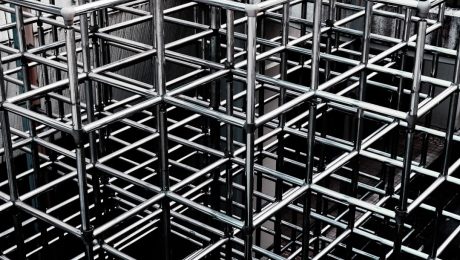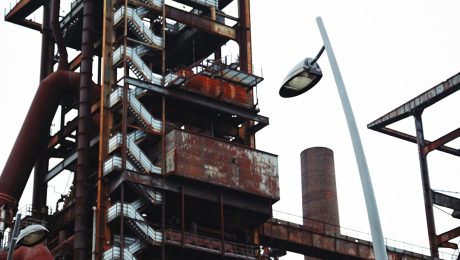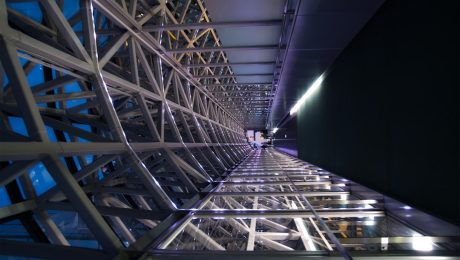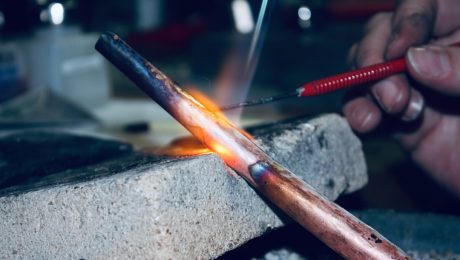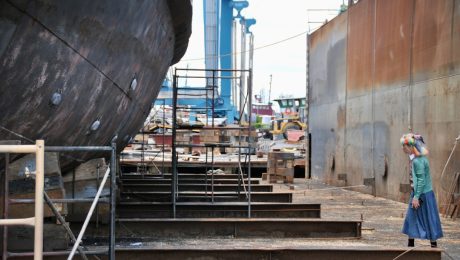In today’s rapidly changing business landscape, stagnation is a death sentence. Organizations that thrive are those that embrace a culture of continuous improvement – a commitment to constant learning, adaptation, and optimization. This isn’t just about tweaking processes; it’s about fostering a mindset where improvement is ingrained in every aspect of the organization, from the top down.
Understanding the Foundation: What is Continuous Improvement?
Continuous improvement, often abbreviated as CI, is a philosophy and a set of practices aimed at consistently enhancing products, services, and processes. It’s not about making radical, disruptive changes all at once. Instead, it focuses on small, incremental improvements implemented regularly. This iterative approach minimizes risk and maximizes the chances of successful implementation. Think of it as a journey, not a destination. Key methodologies like Kaizen (Japanese for “change for the better”) and Lean management are built on this principle, focusing on eliminating waste and maximizing efficiency.
Building the Pillars: Cultivating a Culture of Continuous Improvement
Creating a culture of continuous improvement requires more than just implementing new tools or methodologies. It demands a fundamental shift in organizational mindset and behavior. This involves several key elements:
- Leadership Buy-in: Senior management must champion the initiative, actively participating and demonstrating a commitment to continuous improvement. Their actions set the tone for the entire organization.
- Employee Empowerment: Employees at all levels need to feel empowered to identify problems, propose solutions, and participate in the improvement process. Open communication and a culture of psychological safety are crucial.
- Data-Driven Decision Making: Continuous improvement relies on data to identify areas for improvement and measure the effectiveness of implemented changes. Regular data collection and analysis are essential.
- Feedback Mechanisms: Establishing robust feedback loops allows for ongoing assessment and adjustments. This includes gathering feedback from customers, employees, and other stakeholders.
- Training and Development: Providing employees with the necessary skills and knowledge to participate effectively in the continuous improvement process is vital. This might include training in Lean methodologies, Six Sigma, or other relevant techniques.
Measuring Success: Key Metrics and Indicators
Tracking progress is essential to demonstrate the value of continuous improvement initiatives. Key metrics can include:
- Reduced Defects: A decrease in errors, mistakes, and faulty products or services.
- Improved Efficiency: Increased productivity and reduced waste in processes.
- Enhanced Customer Satisfaction: Higher levels of customer happiness and loyalty.
- Increased Employee Engagement: Improved morale and motivation among employees.
- Reduced Costs: Lower operational expenses and improved profitability.
Regularly monitoring these metrics helps to identify areas where improvements are needed and demonstrate the impact of CI efforts.
Overcoming Challenges: Common Obstacles and Solutions
Implementing a culture of continuous improvement isn’t always easy. Common challenges include:
- Resistance to Change: Employees may resist new processes or methods, fearing disruption or additional workload. Addressing these concerns through open communication and training is crucial.
- Lack of Resources: Implementing CI initiatives may require investment in training, technology, or other resources. Prioritizing projects and securing necessary funding are essential.
- Lack of Management Support: Without strong leadership buy-in, CI initiatives can struggle to gain traction. Securing commitment from senior management is paramount.
- Measuring Success: Defining and tracking the right metrics is essential to demonstrate the value of CI efforts. Choosing appropriate metrics and regularly monitoring progress are vital.
- Maintaining Momentum: Sustaining the momentum of CI efforts over the long term requires ongoing commitment and reinforcement. Regular reviews, celebrations of successes, and continuous adaptation are key.
Addressing these challenges proactively is key to successfully establishing a culture of continuous improvement.
Sustaining the Momentum: Long-Term Strategies for Success
Creating a sustainable culture of continuous improvement requires ongoing effort and commitment. Key strategies include:
- Embedding CI into daily operations: Make continuous improvement an integral part of all processes and activities, not just a separate initiative.
- Celebrating successes: Recognize and reward employees who contribute to improvement efforts to reinforce positive behaviors.
- Regularly reviewing and adapting: Continuously assess the effectiveness of CI initiatives and adjust strategies as needed.
- Promoting a learning culture: Encourage experimentation, learning from mistakes, and sharing best practices across the organization.
- Using technology to support CI: Leverage technology to streamline processes, collect data, and facilitate collaboration.
By consistently applying these strategies, organizations can create a self-sustaining culture of continuous improvement that drives ongoing growth and success.
In conclusion, cultivating a culture of continuous improvement is a journey that requires dedication, commitment, and a willingness to adapt. By embracing the principles outlined above, organizations can unlock their full potential, fostering innovation, efficiency, and lasting success in an ever-evolving world.
Steel, a ubiquitous material in modern construction, boasts exceptional strength and versatility. However, ensuring the safety and longevity of steel structures requires meticulous strength calculations. This comprehensive guide delves into the intricacies of these calculations, providing a foundational understanding for engineers and students alike.
1. Understanding the Fundamentals: Loads and Load Combinations
Before embarking on any strength calculation, a thorough understanding of the loads acting on the steel structure is paramount. These loads can be broadly classified into:
- Dead Loads: The self-weight of the structural members, permanent fixtures, and other components.
- Live Loads: Variable loads such as occupancy loads (people, furniture), snow loads, wind loads, and vehicular traffic.
- Environmental Loads: Loads arising from environmental factors like seismic activity, temperature variations, and ice accumulation.
Design codes, such as Eurocode 3 (EN 1993) or the American Institute of Steel Construction (AISC) specifications, provide detailed guidance on determining these loads and their respective load combinations. Load combinations account for the simultaneous occurrence of different load types, ensuring a conservative design that accounts for worst-case scenarios. For example, a combination might consider the dead load plus the maximum live load plus a factored wind load.
2. Material Properties: The Foundation of Steel Strength
The strength of a steel structure is intrinsically linked to the material properties of the steel itself. Key properties include:
- Yield Strength (fy): The stress at which the steel begins to deform plastically.
- Ultimate Tensile Strength (fu): The maximum stress the steel can withstand before failure.
- Young’s Modulus (E): A measure of the steel’s stiffness or resistance to deformation.
These properties are determined through material testing and are specified in the steel’s material certification. The selection of appropriate steel grade is crucial, as it directly influences the structural capacity. Design codes provide allowable stress values based on the yield strength, ensuring adequate safety margins.
3. Section Properties: Calculating Resistance
Once the material properties are known, the next step involves calculating the section properties of the steel members. These properties define the member’s resistance to different types of stresses. Key section properties include:
- Area (A): The cross-sectional area of the member, crucial for calculating tensile and compressive resistance.
- Moment of Inertia (I): A measure of the member’s resistance to bending, influencing its flexural capacity.
- Section Modulus (Z): A geometric property that relates the moment of inertia to the distance from the neutral axis, simplifying bending calculations.
- Shear Area (Av): Used to calculate the resistance to shear stresses.
These properties are readily available for standard steel sections in handbooks and design software. For complex or custom sections, specialized calculations or software are necessary.
4. Strength Checks: Ensuring Structural Integrity
With the loads and section properties determined, strength checks are performed to ensure the structural elements can withstand the applied loads without failure. These checks are typically performed for various failure modes:
- Tensile Strength Check: Verifying that the tensile stress in a member does not exceed the allowable tensile stress.
- Compressive Strength Check: Checking for buckling failure in compression members, considering slenderness ratios and effective lengths.
- Shear Strength Check: Ensuring that the shear stress in a member remains below the allowable shear stress.
- Flexural Strength Check: Verifying that the bending moment does not exceed the member’s flexural capacity.
- Deflection Check: Ensuring that the deflection under load remains within acceptable limits, considering serviceability requirements.
Design codes provide detailed formulas and procedures for performing these checks, often involving safety factors to account for uncertainties and potential variations in material properties and loading conditions.
5. Design Codes and Software: Tools for Accurate Calculations
Accurate strength calculations are crucial for ensuring the safety and reliability of steel structures. This necessitates adherence to relevant design codes and the use of appropriate software tools. Design codes provide a standardized framework for structural design, ensuring consistency and safety. Examples include Eurocode 3 (EN 1993), AISC 360, and AS/NZS 4600. These codes specify allowable stresses, load combinations, and design procedures.
Furthermore, specialized software packages simplify the complex calculations involved in steel structure design. These tools automate many aspects of the design process, including section property calculations, load analysis, and strength checks. Examples include RISA-3D, ETABS, and SAP2000. Using such software significantly improves efficiency and accuracy, reducing the risk of errors.
Accurate strength calculations are the cornerstone of safe and reliable steel structures. By understanding the fundamentals of loads, material properties, section properties, failure modes, and design codes, engineers can ensure the structural integrity of their designs.
Tags: steel structure, strength calculation, structural analysis, steel design, design codes
The steel industry is a cornerstone of modern civilization, but its traditional production methods contribute significantly to global greenhouse gas emissions. The urgent need to mitigate climate change necessitates a radical shift towards sustainable steel production. This post explores innovative strategies to drastically reduce the carbon footprint of steel factories, paving the way for a greener and more sustainable future.
1. Optimizing Energy Efficiency in Steel Production
Steelmaking is an energy-intensive process. A significant portion of the industry’s carbon footprint stems from the energy consumed in blast furnaces and other stages of production. Improving energy efficiency is crucial. This can be achieved through several methods:
- Implementing advanced process control systems: Real-time monitoring and optimization of energy consumption during various stages of steel production can significantly reduce waste and improve overall efficiency.
- Utilizing waste heat recovery systems: Capturing and reusing waste heat generated during the steelmaking process can substantially reduce the demand for primary energy sources.
- Investing in high-efficiency equipment: Upgrading outdated equipment with more energy-efficient alternatives, such as advanced electric arc furnaces (EAFs), can lead to substantial energy savings.
- Improving insulation and reducing heat loss: Proper insulation of furnaces and other equipment minimizes energy loss and improves overall thermal efficiency.
2. Transitioning to Renewable Energy Sources
The reliance on fossil fuels in steel production is a major contributor to greenhouse gas emissions. Transitioning to renewable energy sources is vital for decarbonizing the industry. This involves:
- Harnessing solar and wind power: Integrating renewable energy sources like solar and wind farms into steel plant operations can directly reduce reliance on fossil fuels.
- Exploring geothermal energy: Geothermal energy can provide a consistent and reliable source of heat for certain steelmaking processes, reducing the need for fossil fuel-based heating.
- Utilizing hydropower: Where geographically feasible, hydropower can provide a clean and sustainable source of electricity for steel production.
- Investing in green hydrogen: Hydrogen produced from renewable energy sources can replace fossil fuels in various steelmaking processes, significantly reducing carbon emissions.
3. Implementing Carbon Capture, Utilization, and Storage (CCUS) Technologies
CCUS technologies offer a promising pathway for reducing carbon emissions from steel production. These technologies capture CO2 emissions from various sources within the steel plant and either store them underground or utilize them in other industrial processes:
- Post-combustion capture: Capturing CO2 from the flue gases of blast furnaces and other combustion processes.
- Oxy-fuel combustion: Burning fuel in pure oxygen, which produces a concentrated stream of CO2 that is easier to capture.
- Carbon capture from direct reduction processes: Capturing CO2 emitted during the direct reduction of iron ore.
- CO2 utilization: Using captured CO2 in other industrial processes, such as enhanced oil recovery or the production of chemicals and fuels.
4. Embracing Sustainable Raw Materials and Recycling
The raw materials used in steel production significantly impact its carbon footprint. Shifting towards more sustainable sources and increasing recycling rates is crucial:
- Utilizing recycled steel: Recycling steel scrap significantly reduces the energy and emissions associated with producing virgin steel.
- Sourcing iron ore from sustainable mines: Choosing iron ore from mines with responsible environmental practices minimizes the environmental impact of raw material extraction.
- Exploring alternative iron sources: Investigating alternative iron sources, such as iron from red mud (a byproduct of the alumina industry), can reduce reliance on traditional iron ore mining.
- Implementing a circular economy model: Designing steel products for recyclability and establishing efficient recycling infrastructure is essential for a circular steel economy.
5. Fostering Innovation and Collaboration in Green Steel Technologies
The transition to sustainable steel production requires continuous innovation and collaboration across the entire value chain. This involves:
- Investing in research and development: Supporting research into new and improved green steel technologies is essential for accelerating the decarbonization process.
- Promoting industry partnerships: Collaboration between steel producers, technology providers, and research institutions is crucial for the development and deployment of green steel technologies.
- Developing industry standards and certifications: Establishing clear standards and certifications for sustainable steel production can help ensure transparency and accountability.
- Supporting policy initiatives: Government policies and incentives can play a significant role in driving the adoption of green steel technologies.
Reducing the carbon footprint of steel factories requires a multifaceted approach encompassing energy efficiency improvements, renewable energy adoption, carbon capture technologies, sustainable raw material sourcing, and a commitment to innovation and collaboration. By embracing these strategies, the steel industry can forge a greener future and contribute significantly to global climate change mitigation efforts.
Tags: steel industry, carbon footprint, sustainable steel, green steel, carbon emissions
Harnessing the power of the sun is a crucial step towards a sustainable future, and choosing the right solar panel mounting system is paramount to the success of your solar energy project. This comprehensive guide explores the various types of mounting systems available, helping you make an informed decision based on your specific needs and circumstances.
1. Understanding the Importance of a Robust Mounting System
A solar panel mounting system is more than just a way to attach your panels to your roof or ground; it’s the backbone of your entire solar energy setup. A poorly designed or installed system can lead to several problems, including:
- Reduced Energy Production: Misaligned panels or those subjected to movement due to poor mounting can significantly reduce energy output.
- Panel Damage: A weak or improperly installed system can leave your panels vulnerable to damage from wind, snow, or even simple vibrations.
- Safety Hazards: A failing mounting system can pose a serious safety risk, potentially causing panels to fall and injure people or damage property.
- Warranty Issues: Many solar panel manufacturers void warranties if the panels are not installed using an approved mounting system.
Therefore, selecting and installing a high-quality, appropriately designed mounting system is crucial for maximizing energy production, ensuring panel longevity, and maintaining overall system safety.
2. Exploring Different Types of Solar Panel Mounting Systems
The choice of mounting system depends largely on the type of installation – rooftop or ground-mounted – and the specific characteristics of the installation site. Here are some common types:
Rooftop Mounting Systems:
- Rack Mounting Systems: These are the most common type for residential and commercial rooftops. They consist of rails and clamps that securely attach to the roof and hold the panels in place. They are suitable for various roof types, including asphalt shingles, metal, and tile.
- Integrated Mounting Systems: These systems are integrated directly into the roof structure during construction, providing a seamless and aesthetically pleasing solution. However, they are typically more expensive and require planning during the building phase.
- Flashing Mounting Systems: These systems use flashing to create a watertight seal between the panels and the roof, preventing leaks. They are crucial for applications where watertightness is paramount.
Ground Mounting Systems:
- Ground Mount Racks: Similar to rooftop rack systems, these use rails and clamps to secure panels to ground-mounted posts or structures. They offer flexibility in terms of panel arrangement and are ideal for large-scale solar farms.
- Pole Mounting Systems: These systems use single or multiple poles to support the panels, often seen in open fields or areas with limited ground space.
- Ballasted Mounting Systems: These systems use weight (ballast) to secure the panels to the ground without the need for ground penetration. They are ideal for areas with sensitive soil or where ground penetration is restricted.
3. Factors to Consider When Choosing a Mounting System
Several factors influence the selection of the optimal mounting system:
- Roof Type: The type of roofing material (tile, shingle, metal) significantly impacts the choice of mounting system. Some systems are better suited for specific roof types.
- Roof Angle and Orientation: The angle and orientation of the roof affect energy production. The mounting system should be designed to optimize panel angle for maximum sunlight exposure.
- Wind Load and Snow Load: The system must be able to withstand the local wind and snow loads to prevent damage or failure. Engineering calculations are often necessary.
- Building Codes and Regulations: Compliance with local building codes and regulations is crucial for legal and safe installation.
- Budget: Mounting systems vary significantly in cost, ranging from relatively inexpensive rack systems to more expensive integrated systems.
- Aesthetics: The visual impact of the mounting system is a consideration for some homeowners, with some systems offering more aesthetically pleasing solutions than others.
4. Professional Installation: Ensuring Safety and Efficiency
While some DIY enthusiasts may attempt to install solar panel mounting systems, professional installation is strongly recommended. Professionals possess the expertise and experience to:
- Properly assess the site: They conduct thorough site surveys to determine the best mounting system and installation method.
- Ensure structural integrity: They ensure the system is securely attached and can withstand environmental stresses.
- Comply with building codes: They ensure the installation meets all relevant building codes and regulations.
- Guarantee safety: They prioritize safety throughout the installation process, minimizing risks of accidents or damage.
- Optimize energy production: They ensure optimal panel orientation and alignment for maximum energy generation.
The cost of professional installation is a worthwhile investment, ensuring long-term system reliability and safety.
5. Maintenance and Longevity of Your Solar Mounting System
Regular maintenance is crucial for extending the lifespan of your solar panel mounting system. This includes:
- Regular Inspections: Periodic inspections should be carried out to check for any signs of damage, corrosion, or looseness.
- Cleaning: Keeping the system clean and free of debris helps prevent corrosion and ensures optimal performance.
- Tightening Bolts and Connections: Periodically tightening bolts and connections helps prevent loosening due to vibrations or environmental factors.
- Addressing Corrosion: Addressing any signs of corrosion promptly helps prevent further damage and ensures the system’s longevity.
By following these maintenance practices, you can ensure your solar mounting system remains robust and efficient for many years, maximizing your return on investment.
Choosing the right solar panel mounting system is a critical decision that significantly impacts the efficiency, safety, and longevity of your solar energy investment. By carefully considering the factors discussed above and opting for professional installation and maintenance, you can ensure your system delivers optimal performance for years to come.
Tags: solar panel mounting, solar mounting systems, rooftop solar mounting, ground mount solar, solar panel installation
Ring shank nails are a crucial element in many wooden structures, offering superior holding power compared to common nails. Often overlooked, their unique design significantly impacts the strength and longevity of projects ranging from simple fences to complex timber-framed buildings. This comprehensive guide delves into the world of ring shank nails, exploring their characteristics, applications, and best practices for installation.
Understanding Ring Shank Nail Anatomy and Advantages
Unlike smooth or spiral shank nails, ring shank nails feature a series of rings or barbs along their shaft. These rings create significant friction when driven into wood, preventing the nail from pulling out under load. This increased holding power is the primary advantage of ring shank nails. The rings also increase the surface area in contact with the wood, enhancing the overall grip and reducing the likelihood of splitting the lumber, especially in harder wood species. The size and spacing of the rings can vary depending on the nail’s diameter and intended application. Larger rings generally provide greater holding power, while closer spacing can be beneficial for preventing withdrawal in softer woods.
Applications of Ring Shank Nails in Wooden Structures
The superior holding power of ring shank nails makes them ideal for a wide array of applications in wooden construction. They are commonly used in:
- Framing: Securing wall studs, roof trusses, and floor joists. Their strength ensures the structural integrity of the building.
- Decking: Attaching decking boards to joists, providing a secure and long-lasting surface. The increased grip prevents movement and squeaking.
- Sheathing: Fastening plywood or OSB sheathing to framing members, creating a strong and stable exterior wall or roof system.
- Fence Construction: Building sturdy and durable fences that can withstand strong winds and other environmental stresses.
- Pallet Construction: Securing boards together to create strong and stable pallets for shipping and storage.
- Outdoor Structures: Building sheds, gazebos, and other outdoor structures where resistance to weathering is crucial.
Comparing Ring Shank Nails to Other Nail Types
Ring shank nails offer distinct advantages over other types of nails, particularly smooth shank nails. Smooth shank nails, while easier to drive, offer significantly less holding power and are prone to pull-out. Spiral shank nails also provide good holding power, but ring shank nails often provide a better balance between holding power and ease of driving. The choice between nail types often depends on the specific application and the type of wood being used. Hardwoods, for instance, may benefit from the increased holding power of ring shank nails, while softer woods might be suitable for spiral shank nails to reduce the risk of splitting.
Proper Installation Techniques for Optimal Performance
To maximize the holding power of ring shank nails, proper installation techniques are essential. Pre-drilling pilot holes is often recommended, especially for hardwoods or when using larger diameter nails. This prevents splitting and ensures the nail is driven straight. Using a nail gun can significantly speed up the process and ensure consistent penetration depth. Always choose the appropriate nail length for the application, ensuring sufficient penetration into the connecting member. Over-driving nails can also weaken the connection, so it’s crucial to drive the nail flush without damaging the surrounding wood. Consider using a nail set to countersink the nail heads for a cleaner finish.
Potential Drawbacks and Considerations
While ring shank nails offer many benefits, they also have some potential drawbacks. They can be slightly more difficult to drive than smooth shank nails, requiring more force or the use of specialized tools. The rings can also cause more wear and tear on nail guns compared to smooth shank nails. Furthermore, the cost of ring shank nails might be slightly higher than smooth shank nails, though this difference is often negligible considering the enhanced performance and longevity they offer. The choice of nail type should always involve considering the project’s specific needs, budget, and the type of wood being used.
In conclusion, ring shank nails are a valuable asset in wooden construction, offering superior holding power and durability compared to other nail types. Understanding their characteristics, applications, and proper installation techniques is crucial for ensuring the strength and longevity of any wooden structure. By carefully selecting the right type of ring shank nail and employing proper installation methods, you can significantly enhance the performance and reliability of your projects.
Tags: ring shank nails, wooden construction, framing nails, decking nails, construction nails, nail types, DIY construction
The steel industry, a cornerstone of global infrastructure and manufacturing, faces unique challenges in managing its intricate supply chain. From the extraction of raw materials to the delivery of finished products, the process is complex, demanding, and heavily reliant on efficient coordination and technological innovation. This post delves into the critical aspects of supply chain management within this vital sector.
1. Raw Material Sourcing: The Foundation of Steel Production
The journey of steel begins long before the blast furnace. Securing a consistent supply of high-quality raw materials, primarily iron ore, coking coal, and limestone, is paramount. This involves strategic partnerships with mining companies, often located geographically distant from steel mills. Effective sourcing strategies must consider:
- Geopolitical risks: Political instability, trade wars, and resource nationalism can significantly disrupt supply chains. Diversification of sourcing locations is crucial to mitigate these risks.
- Price volatility: Commodity prices fluctuate dramatically, impacting profitability. Hedging strategies and long-term contracts are essential to manage price risk.
- Sustainability concerns: The environmental impact of mining is increasingly scrutinized. Steel producers must prioritize suppliers committed to responsible mining practices and environmental stewardship.
- Quality control: Maintaining consistent raw material quality is critical for the production of high-performance steel. Rigorous quality control measures throughout the sourcing process are necessary.
2. Manufacturing and Production: Optimizing the Steelmaking Process
The steelmaking process itself is a complex series of transformations, requiring precise control over temperature, chemical composition, and processing parameters. Efficient manufacturing hinges on:
- Production planning and scheduling: Optimizing production schedules to meet customer demand while minimizing waste and maximizing efficiency is crucial. Advanced planning and scheduling (APS) systems are increasingly used to achieve this.
- Inventory management: Balancing inventory levels to avoid stockouts while minimizing storage costs is a delicate act. Just-in-time (JIT) inventory management principles are often employed to reduce inventory holding costs.
- Process optimization: Continuous improvement initiatives, such as Lean manufacturing and Six Sigma, are vital for enhancing productivity and reducing production costs.
- Technological advancements: The adoption of advanced technologies, such as artificial intelligence (AI) and machine learning (ML), offers significant potential for optimizing steelmaking processes and improving quality control.
3. Logistics and Transportation: Delivering Steel to Market
Once steel is produced, efficient logistics and transportation are essential to deliver it to customers on time and in good condition. This involves:
- Transportation modes: Choosing the optimal transportation mode (rail, road, sea) depends on factors such as distance, cost, and delivery time. Often, a multimodal approach is necessary.
- Warehouse management: Efficient warehouse management systems are crucial for storing and handling steel products, ensuring their protection from damage and theft.
- Order fulfillment: Accurate and timely order fulfillment is critical for customer satisfaction. Effective order management systems are essential for tracking orders and ensuring timely delivery.
- Supply chain visibility: Real-time tracking and monitoring of shipments using technologies like GPS and RFID provides valuable insights into the location and status of goods, enabling proactive management of potential disruptions.
4. Risk Management and Resilience: Navigating Uncertainties
The steel industry faces numerous risks, including price volatility, geopolitical instability, natural disasters, and supply chain disruptions. Effective risk management strategies are crucial for ensuring business continuity:
- Supply chain diversification: Reducing reliance on single suppliers or transportation routes minimizes the impact of disruptions.
- Inventory management strategies: Holding strategic safety stock can mitigate the impact of unexpected supply chain disruptions.
- Contingency planning: Developing robust contingency plans to address potential disruptions is crucial for ensuring business continuity.
- Collaboration and communication: Strong communication and collaboration with suppliers, customers, and logistics providers are essential for proactively managing risks.
5. Emerging Technologies and the Future of Steel Supply Chain Management
Technological advancements are transforming the steel industry’s supply chain. Key innovations include:
- Blockchain technology: Enhancing transparency and traceability throughout the supply chain, improving accountability and reducing fraud.
- Artificial intelligence (AI) and machine learning (ML): Optimizing production processes, predicting demand, and improving logistics efficiency.
- Internet of Things (IoT): Real-time monitoring of assets and processes, enabling proactive management of potential disruptions.
- Digital twin technology: Creating virtual representations of the supply chain, allowing for simulations and optimization of processes before implementation.
The effective implementation of these technologies requires significant investment in infrastructure and expertise, but the potential benefits in terms of efficiency, cost savings, and sustainability are substantial.
In conclusion, successful supply chain management in the steel industry requires a holistic approach encompassing strategic sourcing, efficient manufacturing, robust logistics, proactive risk management, and the adoption of emerging technologies. By mastering these elements, steel producers can enhance their competitiveness, improve profitability, and contribute to a more sustainable future.
SEO Tags:
Steel Supply Chain, Steel Industry Logistics, Steel Manufacturing, Supply Chain Management, Steel Industry Technology
body {
font-family: sans-serif;
line-height: 1.6;
}
h1, h2, h3 {
color: #333;
}
Ring shank nails are a crucial element in many wooden structures, offering superior holding power compared to common nails. Understanding their properties and applications is vital for anyone involved in carpentry, construction, or DIY projects involving wood. This comprehensive guide explores the world of ring shank nails, delving into their strengths, weaknesses, and best practices for their use.
Understanding Ring Shank Nail Design and Functionality
Unlike smooth shank nails, ring shank nails feature annular rings or grooves along their shafts. These rings significantly increase the nail’s surface area in contact with the wood. This increased surface area creates greater friction, resulting in superior holding power and resistance to withdrawal. The rings also help to prevent the nail from spinning during hammering, ensuring a more precise and secure installation. The depth and spacing of the rings vary depending on the nail’s size and intended application. Heavier-duty nails often have deeper and more pronounced rings for enhanced holding power in demanding applications.
Applications of Ring Shank Nails in Wooden Structures
Ring shank nails find widespread use in various wooden structures due to their exceptional holding strength. They are particularly well-suited for applications requiring high load-bearing capacity and resistance to vibration or impact. Some key applications include:
- Framing: Ring shank nails are ideal for securing wall studs, floor joists, and roof rafters, ensuring the structural integrity of the building.
- Decking: Their superior holding power makes them a preferred choice for attaching decking boards, preventing loosening and movement over time.
- Sheathing: They provide excellent fastening for plywood or OSB sheathing, creating a strong and stable substrate for siding or roofing.
- Pallets and Crates: Ring shank nails are commonly used in the construction of pallets and crates due to their ability to withstand the stresses of shipping and handling.
- Fence Construction: Their holding power is vital for creating strong and durable fences that can withstand wind and other environmental factors.
Advantages of Using Ring Shank Nails
The advantages of using ring shank nails are numerous, contributing to their popularity in various construction applications:
- Increased Holding Power: The primary advantage is their superior holding power compared to smooth shank nails, reducing the risk of loosening or withdrawal.
- Enhanced Resistance to Withdrawal: The rings create significant friction, making it much harder to pull the nail out of the wood.
- Improved Resistance to Vibration: They are less prone to loosening due to vibration, making them suitable for applications subjected to dynamic loads.
- Reduced Nail Pops: The increased holding power minimizes the risk of nail pops, where the nail head protrudes from the surface of the wood.
- Superior Durability: They provide a more durable and long-lasting fastening solution compared to common nails.
Disadvantages and Considerations When Using Ring Shank Nails
While ring shank nails offer significant advantages, there are some considerations to keep in mind:
- Cost: Ring shank nails are generally more expensive than smooth shank nails.
- Potential for Wood Splitting: The increased holding power can sometimes lead to wood splitting, especially when using larger nails in softer wood species. Pre-drilling pilot holes can mitigate this risk.
- Increased Hammering Effort: Due to the increased friction, driving ring shank nails may require slightly more effort than driving smooth shank nails.
- Nail Gun Compatibility: Not all nail guns are compatible with ring shank nails; ensure compatibility before purchasing.
Best Practices for Installing Ring Shank Nails
To maximize the benefits of ring shank nails, follow these best practices:
- Choose the Right Size and Type: Select nails appropriate for the wood type, thickness, and application. Consult nail sizing charts for guidance.
- Pre-drilling Pilot Holes (When Necessary): Pre-drilling pilot holes, especially in harder or softer woods, helps prevent wood splitting and ensures easier driving.
- Use a Suitable Hammer or Nail Gun: Use a hammer or nail gun appropriate for the size and type of nail.
- Proper Nail Placement: Ensure nails are driven straight and at the correct angle to achieve optimal holding power.
- Avoid Overdriving: Overdriving nails can damage the wood and reduce their holding power.
- Check for Nail Pops: Regularly inspect the work for nail pops and address them promptly.
By understanding the properties and applications of ring shank nails, and by following best practices for their installation, you can ensure the strength and durability of your wooden structures for years to come. They are a valuable tool for any carpenter or DIY enthusiast working with wood.
Tags: ring shank nails, construction nails, wooden structures, framing nails, decking nails, DIY carpentry
The construction industry is undergoing a significant transformation, driven by the increasing demand for faster, more efficient, and sustainable building solutions. Prefabricated steel buildings are at the forefront of this revolution, offering a compelling alternative to traditional construction methods. This post delves into the exciting innovations shaping the future of prefab steel structures, exploring the technologies and design principles that are pushing the boundaries of what’s possible.
1. Sustainable Steel: Eco-Friendly Prefab Construction
Sustainability is no longer a niche concern; it’s a core requirement for modern construction. Prefab steel buildings are inherently more sustainable than many traditional options. Steel is a highly recyclable material, significantly reducing the environmental impact of construction waste. Innovations in steel production are further enhancing its eco-friendliness, with the use of recycled steel content increasing and efforts to reduce carbon emissions during manufacturing becoming more prominent. Furthermore, the precision of prefab construction minimizes material waste on-site, contributing to a smaller carbon footprint. The use of sustainable insulation materials within the steel frame further boosts the environmental credentials of these structures. Examples include recycled cellulose insulation or plant-based alternatives, minimizing reliance on petroleum-based products.
2. Advanced Design & Engineering: Pushing the Boundaries of Steel
Modern software and design techniques are revolutionizing the design and engineering of prefab steel buildings. Building Information Modeling (BIM) allows architects and engineers to create highly detailed 3D models, simulating the entire construction process and identifying potential problems before construction even begins. This leads to improved accuracy, reduced errors, and faster construction times. Furthermore, advanced analysis tools allow engineers to optimize the steel structure for maximum strength and efficiency, minimizing material usage without compromising structural integrity. This precision engineering is crucial for ensuring the longevity and resilience of these buildings, especially in areas prone to extreme weather conditions. New steel alloys with enhanced strength-to-weight ratios are also contributing to the development of lighter, more robust structures.
3. Modular Construction & Rapid Deployment: Speed & Efficiency
Prefab steel buildings are synonymous with speed and efficiency. Modular construction, where building components are prefabricated off-site in controlled factory environments, significantly accelerates the construction process. These modules are then transported to the building site and assembled, reducing on-site construction time by a considerable margin. This speed translates to faster project completion, reduced labor costs, and earlier occupancy. Innovations in modular design are leading to more complex and versatile structures, blurring the lines between what was previously possible with traditional methods. This includes the integration of pre-installed MEP (Mechanical, Electrical, and Plumbing) systems, further streamlining the construction process and minimizing on-site work.
4. Smart Building Integration: Technology & Automation
The integration of smart building technologies is transforming prefab steel structures into intelligent and responsive environments. This includes the incorporation of smart sensors for monitoring energy consumption, security systems, and environmental controls. Automation is playing a crucial role, with robotic systems used in the manufacturing process for enhanced precision and efficiency. Data analytics derived from smart building systems can provide valuable insights into building performance, enabling proactive maintenance and optimization of energy usage. This contributes to lower operational costs and a more sustainable building lifecycle. The integration of renewable energy sources, such as solar panels, further enhances the sustainability and efficiency of these structures.
5. Seismic & Wind Resistance: Engineering for Extreme Conditions
Steel’s inherent strength and flexibility make it an ideal material for building in areas prone to seismic activity or high winds. Advanced engineering techniques, coupled with the use of high-strength steel alloys and innovative connection systems, ensure that prefab steel buildings can withstand extreme weather events. These designs often incorporate features such as base isolation systems or specialized bracing to further enhance seismic resistance. Wind tunnel testing and sophisticated computer simulations are employed to optimize the design for optimal wind performance, minimizing the risk of damage during storms. This resilience not only protects the building but also ensures the safety of its occupants.
The future of prefab steel building innovations is bright. Continuous advancements in materials, design, and construction techniques are pushing the boundaries of what’s possible, creating more sustainable, efficient, and resilient buildings. These innovations are not only shaping the construction industry but also contributing to a more sustainable and resilient built environment.
SEO Tags:
prefab steel buildings, modular construction, sustainable steel, smart building technology, seismic resistant buildings
Pipe bending and straightening are crucial processes in various industries, from construction and manufacturing to plumbing and oil and gas. Whether you need to create a precise curve or restore a damaged pipe to its original form, understanding the available solutions is vital for efficiency and quality. This comprehensive guide will delve into the different methods, tools, and considerations involved in achieving perfect bends and straight pipes.
1. Understanding Pipe Bending Techniques
Several techniques exist for bending pipes, each suited to different pipe materials, diameters, and desired bend radii. The choice of method significantly impacts the final product’s quality and integrity. Let’s explore some common methods:
- Manual Bending: This method uses hand tools like pipe benders, which are suitable for smaller diameter, softer pipes. It’s a cost-effective option for small-scale projects but can be labor-intensive and less precise for larger pipes.
- Hydraulic Bending: This involves using a hydraulic pipe bender, a powerful machine that exerts controlled pressure to bend pipes accurately. It’s ideal for larger diameter pipes and allows for precise control over the bend radius and angle. Hydraulic benders are commonly used in industrial settings.
- Roll Bending: This technique uses a series of rollers to gradually bend the pipe. It’s suitable for long, continuous bends and is often used for large-diameter pipes in applications like structural steelwork.
- Press Bending: This method employs a press to bend the pipe, offering high precision and repeatability. Press bending is often preferred for complex bends and specialized applications.
Choosing the right bending technique depends on factors like pipe material, diameter, desired bend radius, and the overall project requirements. Consider the level of precision needed and the available resources when making your selection.
2. Essential Tools for Pipe Bending and Straightening
The tools required for pipe bending and straightening vary depending on the chosen method. Here are some essential tools:
- Pipe Benders (Hand and Hydraulic): These are the core tools for bending pipes, offering different levels of power and precision.
- Pipe Wrenches: Used for securing and rotating pipes during the bending process.
- Measuring Tapes and Angle Finders: Essential for ensuring accurate measurements and angles.
- Pipe Straighteners: These tools, ranging from simple hand-operated models to powerful hydraulic presses, are used to correct imperfections in straight pipes.
- Supporting Structures: Workbenches, vises, and other supports are crucial for maintaining stability during bending and straightening.
- Safety Gear: Gloves, eye protection, and appropriate clothing are essential to prevent injuries.
Investing in high-quality tools is crucial for achieving precise and safe results. Ensure your tools are appropriately sized and rated for the type of pipe you’re working with.
3. Pipe Material Considerations
The material of the pipe significantly influences the bending and straightening process. Different materials have varying levels of flexibility and ductility:
- Steel Pipes: Generally require more force to bend and are prone to cracking if bent too sharply. Hydraulic bending or press bending is often preferred for steel pipes.
- Copper Pipes: More malleable than steel, allowing for easier bending using hand tools or less powerful hydraulic benders.
- Aluminum Pipes: Relatively easy to bend but can be susceptible to kinking if not handled carefully. Proper support is essential during bending.
- PVC Pipes: These plastic pipes are easily bent using heat or specialized pipe benders. However, excessive heat can damage the pipe.
Understanding the properties of your pipe material is crucial for selecting the appropriate bending and straightening techniques and tools. Consult material specifications to determine the best approach.
4. Straightening Bent Pipes: Methods and Techniques
Straightening bent pipes requires careful consideration to avoid causing further damage. Several methods exist, each with its own advantages and limitations:
- Manual Straightening: For minor bends, using a hammer and a sturdy surface can be effective. However, this method requires skill and precision to avoid causing more damage.
- Hydraulic Pipe Straighteners: These powerful machines are ideal for straightening severely bent pipes. They exert controlled force to gradually straighten the pipe without causing damage.
- Three-Roll Straighteners: These machines use three rollers to progressively straighten the pipe. They are commonly used for straightening long lengths of pipe.
- Heat Straightening (for certain materials): Applying heat to the bent area can sometimes help relax the metal and allow for easier straightening. This method should only be used with materials suitable for heat treatment.
The choice of straightening method depends on the severity of the bend, the pipe material, and the available resources. Always prioritize safety and take necessary precautions.
5. Safety Precautions During Pipe Bending and Straightening
Safety should be the top priority throughout the entire process. Here are some essential safety precautions:
- Wear appropriate personal protective equipment (PPE): This includes safety glasses, gloves, and sturdy clothing.
- Use properly maintained tools and equipment: Ensure all tools are in good working order and are rated for the task at hand.
- Secure the pipe properly: Prevent the pipe from slipping or moving during bending or straightening.
- Use caution with hydraulic equipment: Hydraulic benders and straighteners can exert significant force. Follow all safety instructions and warnings.
- Work in a well-ventilated area: Certain bending processes may produce fumes or dust.
- Never work alone: Always have someone nearby in case of an accident.
By following these safety precautions, you can minimize the risk of injury and ensure a safe and productive work environment.
By understanding the various techniques, tools, and safety considerations involved in pipe bending and straightening, you can ensure efficient and high-quality results in your projects. Remember to always prioritize safety and choose the appropriate methods based on your specific needs.
Tags: pipe bending, pipe straightening, hydraulic pipe bending, pipe bending tools, pipe straightening techniques
The steel industry, a cornerstone of global infrastructure, faces increasing pressure to minimize its environmental impact. A significant part of this challenge lies in effectively managing the substantial waste generated throughout the steelmaking process. This comprehensive guide delves into the complexities of waste management in steel production, exploring various waste streams, recycling techniques, environmental considerations, and future trends towards a more sustainable steel industry.
Understanding the Diverse Waste Streams in Steel Production
Steel production generates a wide array of waste materials, each requiring specific handling and treatment. These can be broadly categorized as:
- Slag: A byproduct of the smelting process, slag is a molten mixture of oxides, silicates, and other impurities. Its composition varies depending on the raw materials used and the steelmaking process. While historically considered waste, slag is increasingly recognized as a valuable resource with applications in construction materials (cement, aggregates), agriculture (soil amendment), and even in the production of certain chemicals.
- Dust and Fumes: These airborne particles are generated throughout the process, from raw material handling to the smelting and refining stages. They contain various metallic oxides, silica, and other harmful substances. Effective dust and fume collection systems are crucial to minimize air pollution and recover valuable materials.
- Spent Refractories: Refractory materials line furnaces and other high-temperature equipment. These materials gradually wear down, producing significant waste. Spent refractories often contain hazardous substances and require careful disposal or recycling.
- Pickling Liquors: During the pickling process (removing scale from steel), acidic solutions are used, generating spent pickling liquors containing heavy metals and other pollutants. These require specialized treatment to neutralize the acidity and remove contaminants before disposal.
- Scrap Metal: Although not strictly “waste,” scrap metal from various sources is a crucial feedstock in steel production. Efficient collection and sorting of scrap metal are essential for maximizing its reuse and reducing reliance on virgin materials.
Recycling and Resource Recovery: Turning Waste into Value
Modern steel production places a strong emphasis on recycling and resource recovery. Many byproducts, once considered waste, are now valuable resources. For instance:
- Slag recycling: Slag is used in the production of cement, aggregates for road construction, and other building materials. Granulated slag can be used as a soil amendment in agriculture, improving drainage and nutrient retention.
- Dust and fume recovery: Advanced dust collection systems capture valuable metallic oxides, which can be recycled back into the steelmaking process, reducing the need for virgin ore.
- Scrap metal recycling: The steel industry relies heavily on scrap metal as a primary raw material. Efficient scrap metal collection and processing networks are vital for reducing the environmental impact of steel production.
- Spent refractory recycling: While challenging, research is ongoing to develop effective methods for recycling spent refractories, reducing landfill disposal and recovering valuable components.
Environmental Impact and Regulations
The environmental impact of steel production is substantial, particularly concerning air and water pollution, greenhouse gas emissions, and waste generation. Strict environmental regulations are in place globally to control these impacts. These regulations often mandate:
- Emission controls: Strict limits on air pollutants such as particulate matter, sulfur oxides, and nitrogen oxides.
- Wastewater treatment: Effective treatment of wastewater to remove heavy metals and other pollutants before discharge.
- Waste management plans: Comprehensive plans outlining the handling, treatment, and disposal or recycling of all waste streams.
- Energy efficiency improvements: Measures to reduce energy consumption and greenhouse gas emissions throughout the production process.
Technological Advancements in Waste Management
Technological advancements are playing a crucial role in improving waste management practices in the steel industry. These include:
- Advanced dust and fume collection systems: High-efficiency filters and electrostatic precipitators capture a higher percentage of particulate matter.
- Improved slag processing technologies: Techniques for producing higher-quality granulated slag for various applications.
- Innovative recycling methods: Research and development of new methods for recycling spent refractories and other challenging waste streams.
- Data analytics and process optimization: Using data analytics to optimize processes, minimize waste generation, and improve resource efficiency.
The Future of Sustainable Steel Production
The future of steel production hinges on achieving greater sustainability. This requires a holistic approach encompassing:
- Increased recycling rates: Maximizing the use of scrap metal and other recycled materials.
- Development of cleaner steelmaking processes: Exploring alternative technologies that reduce emissions and waste generation.
- Circular economy principles: Designing processes that minimize waste and maximize resource recovery.
- Collaboration and innovation: Working together across the industry and with research institutions to develop and implement innovative solutions.
By embracing these strategies, the steel industry can significantly reduce its environmental footprint and contribute to a more sustainable future.
Tags: steel production, waste management, steel recycling, sustainable steel, industrial waste


